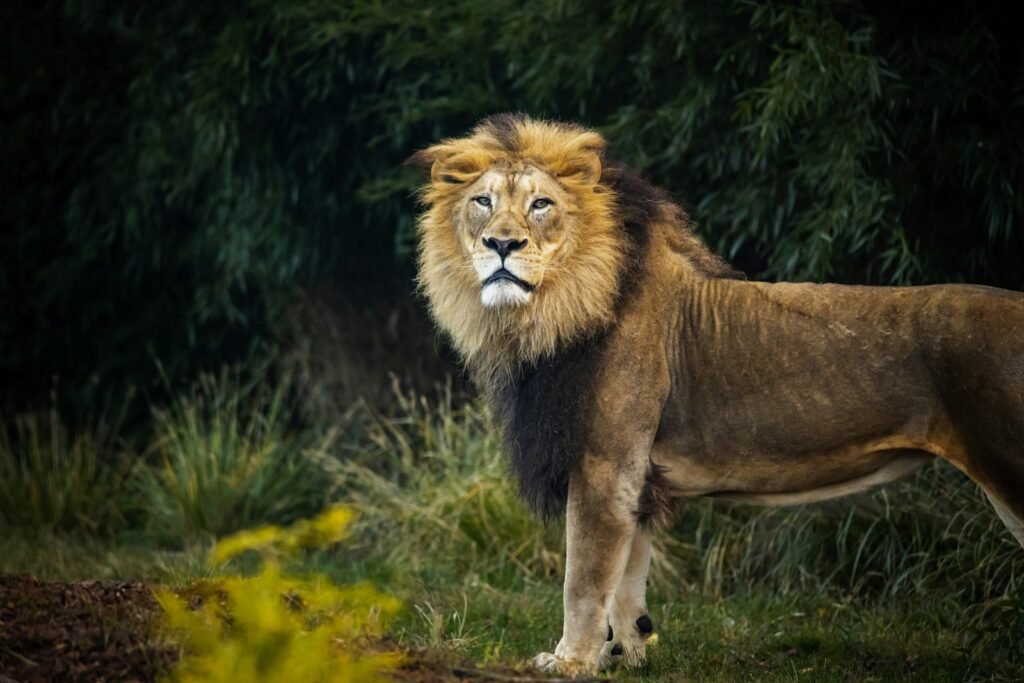The animal kingdom keeps its power plays quiet, but the signs are everywhere – etched in dust tracks, echoed in low rumbles, stitched into the flight of a flock that pivots as one. We’re drawn to ask who leads and why, and this time the question comes with a twist: if zodiac archetypes were field guides, which styles would rise to the top in the wild? Ethology, the science of animal behavior, gives us a hard-nosed framework to check the fit between myth and muscle. Dominance, after all, rarely looks like chest-thumping; it’s often about information, timing, and alliances. So let’s use the zodiac as a playful lens and test it against what researchers actually see in prides, pods, flocks, and herds.
The Hidden Clues

Every hierarchy in nature leaves fingerprints, but they’re subtle – who initiates movement, who resolves conflict, who keeps relationships glued together. In many species, leaders aren’t necessarily the biggest or loudest; they’re the ones with the best information, the sharpest memory, or the strongest network. I once watched a desert baboon troop hesitate at a riverbed until a seasoned female angled downstream, and the troop followed with the quiet certainty of a well-worn map. That wasn’t brute force; it was trust paid in steps and seconds. Leadership thrives where experience and social capital overlap.
Seen through that lens, zodiac “types” become a shorthand for behavioral packages we recognize in the wild. Boldness, caution, sociability, curiosity – these traits tilt the odds in crowded ecosystems. The trick is to separate poetic labels from measurable behaviors and then watch for the alignments that actually matter. When the signal rises above the noise, the pattern is hard to unsee.
Fire Signs in the Savanna: Boldness and Initiation

Fire energy – think Aries, Leo, Sagittarius – maps to the animals that kick things off. In fish shoals and bird flocks, bolder individuals often initiate departures, dragging the undecided into action by momentum alone. That’s pure Aries: first to move, first to test a crossing, not always right but impossible to ignore. In lion society, the everyday story of power is written by lionesses that coordinate hunts, while males form high-stakes alliances to hold territory – a dual script that fits Leo’s theater of charisma and coalition. The spotlight is bright, but it’s earned by synchrony, not solo acts.
Sagittarius shows up as movement writ large – long-range exploration, route scouting, and the taste for new ground. In elephants and migratory ungulates, individuals with route knowledge can tilt the group’s fate when drought bites. Fire leads by starting, by signaling, by saying “now,” and the rest either keep up or get left behind.
Earth Signs and the Long Game: Stability and Strategy

Earth energy – Taurus, Virgo, Capricorn – looks like the patience of old roads. Elephant matriarchs embody Capricorn’s steady calculus, steering families to water with memories built over seasons and crises. Stability isn’t flashy, but in harsh years it’s the difference between a lineage that thrives and one that fades. Taurus maps neatly to the calm gravity seen in ungulate herds, where composure under pressure keeps stampedes from spiraling. Conflict costs energy; steadiness saves it.
Virgo appears in the meticulous order of social insects and cooperative mammals, where division of labor and clean routines reduce chaos. The lesson is that effective hierarchies often privilege reliability over drama. Earth signs would lead by consistency, long memory, and quiet standards that everyone tacitly agrees to keep.
Air Signs and the Network Effect: Communication and Consensus

Air signs – Gemini, Libra, Aquarius – slot into the invisible highways of communication that keep groups aligned. Pigeon flocks hold leadership ladders in midair, with certain birds guiding headings while others relay subtle corrections; it’s network choreography you can only see with high-speed tracking. Dolphins thread social worlds with calls and alliances, using information to pull off complex maneuvers that look almost cinematic. Gemini is the messenger here, the connector whose updates keep the map current. In baboons and other primates, movement decisions often emerge from negotiations rather than decrees, a clean match for Libra’s balancing act.
Aquarius shows up at the edge of innovation – problem-solving corvids, tool-using marine mammals, and individuals that bend rules just enough to make a better one. Air leads by bandwidth: more signals, smarter routing, faster consensus. When the network hums, the hierarchy breathes.
Water Signs Beneath the Surface: Empathy and Stealth

Water signs – Cancer, Scorpio, Pisces – flow through the quieter tactics that keep social fabric intact. In killer whale clans, older females often steer hunting and travel, a maternal leadership that looks like Cancer’s protective orbit. Chimpanzee politics complicates the Scorpio archetype: successful alpha males aren’t just strong; they’re strategic brokers who build alliances and soothe tensions before they explode. Power without social intelligence burns out fast. Pisces is harder to pin to “leaders,” yet schools of fish show how sensitivity to micro-cues can propagate a wave of movement without a single despot.
Across rivers and reefs, water leadership is often about reading the room – the currents of stress, hunger, opportunity – and nudging the group through narrow windows. It’s the kind of influence you only notice after the tide has turned. Empathy, stealth, and timing make a formidable trio.
Why It Matters

We’ve long been trained to picture hierarchies as pyramids – one dominant individual on top, everyone else below. Modern ethology swaps that triangle for a mesh, where influence flows through experience, kinship, and information networks. That shift matters for conservation: protect the matriarch, the route-holder, the coalition builder, and you safeguard not just genes but culture. It also matters for us, because we often copy the wrong models, mistaking volume for authority and aggression for leadership. When we read the field notes carefully, the traits that actually hold groups together look more like patience, memory, and alliance craft.
Using zodiac archetypes as metaphors may feel playful, but it’s a trojan horse for better questions. Instead of asking who’s strongest, we ask who knows the way, who keeps the peace, who sees the threat first. That’s a healthier lens for wildlife management and for boardrooms alike.
The Future Landscape

Tomorrow’s breakthroughs will come from seeing the invisible. Bio-loggers already record heart rates, gut temperatures, and micro-movements; drone swarms watch from above without spooking shy animals; machine learning teases leadership patterns from terabytes of trajectories. Put together, these tools can reveal which individuals trigger group action, which resolve stand-offs, and how those roles shift during heat waves or food crunches. Climate change will stress-test every hierarchy on Earth, amplifying the value of elders with drought memory and innovators that find new tactics.
There are hurdles. Ethics must keep pace with sensors, so we don’t turn wildlife into data farms or corral animals toward “efficient” behaviors that serve humans first. Still, the direction of travel is clear: finer-grained maps of influence, real-time, across continents. The more we see, the more we can protect what actually makes groups resilient.
Conclusion

Start small: when you visit a park or stream, pick one group – geese, guppies, ground squirrels – and watch who moves first, who follows, who settles disputes. You’ll never unsee the patterns once they click. Support projects that safeguard key knowledge-holders, from elephant matriarchs to apex fish that seed schools with experience. If you donate, aim for programs that blend tech with restraint and train local scientists who’ll keep the lights on long after the headlines fade.
At home, ditch the myth that leadership equals dominance. Elevate the teammates who share information, mediate quietly, and remember what others forget. That’s how animal societies endure – and how ours do, too. Which kind of leader do you spot in the wild, and which kind do you choose to be?

Suhail Ahmed is a passionate digital professional and nature enthusiast with over 8 years of experience in content strategy, SEO, web development, and digital operations. Alongside his freelance journey, Suhail actively contributes to nature and wildlife platforms like Discover Wildlife, where he channels his curiosity for the planet into engaging, educational storytelling.
With a strong background in managing digital ecosystems — from ecommerce stores and WordPress websites to social media and automation — Suhail merges technical precision with creative insight. His content reflects a rare balance: SEO-friendly yet deeply human, data-informed yet emotionally resonant.
Driven by a love for discovery and storytelling, Suhail believes in using digital platforms to amplify causes that matter — especially those protecting Earth’s biodiversity and inspiring sustainable living. Whether he’s managing online projects or crafting wildlife content, his goal remains the same: to inform, inspire, and leave a positive digital footprint.




